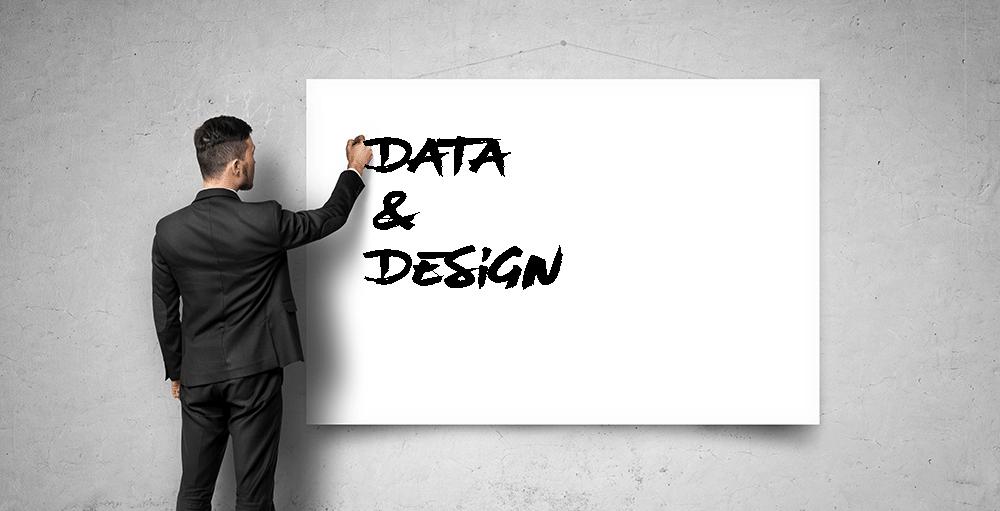I was asked this question recently and I was slightly confused at it even being asked. However, it is an interesting question.
With my design background I’d say that a lot of what we came up with was based on information (data) the client provided us. Mostly it was in the form of a very basic written brief, but it also included data of some description ie basic demographics but more importantly it came down to how much information (data again!) the teams could extrapolate from the client. Even the early adopters of data based design would be able to tell you something in their design story. For example, if you know your market is all under 5’s, you’re not going to be designing Battle Royal style adverts now are you (I hope?!)?
So even with the most basic information available, design is led by data. But today, the amount of data and how it’s interpreted, can be confusing. Used correctly, it could positively affect design of not only your campaigns, your booth but also your customers experiences & interactions with your brands. You do have to cut through the noise and listen to & implement only what is useful or relevant for your campaign / audience.
We need to deconstruct the word design here too. As alluded to earlier, I’m not just talking beautiful ad campaigns, but I’m relating this to events and how design leads your booth layout/design or experiences at events.
So bringing this back to the exhibitions space specifically, what sort of data can drive your booth design?
First things first, you need to set your objectives. What are you trying to get out of this “design?” Who are you trying to meet? What are you trying to sell. For the purpose of this blog, let’s assume you already have that under control.
The primary part of data (after show demographics) pre event that exhibitors capture is leads. The main question, who are they meeting at their booth or who are they hoping to meet, should be asked. With that most basic form of exhibition data they can see what sort of customers are coming to meet them, their job functions, and for example, what products they’re interested in.
The first influence of data on design then, would be what products you need to display & what staff should be on your booth. If everyone registering interest to see you at the event is interested in a certain product for example, then you should make that product stand out. Make it obvious you sell it. Engaged visually with your audience before they even speak to you. You can use that information to work with your design or marketing teams to positively affect your stand presence.
The second part of that data is about the types of customers coming to your stand. For example, if you’re attracting lots of CEO’s should you have your junior team manning the booth? Or your senior team should be within easy reach if needed. So not design in the traditional sense of the word, but you’re still designing the experience, so offer the right assets (team) to support your design (presence).
But what else? How else can data lead design on your exhibiting experience?
There is a wealth of information you could collect around an event, the focus should be on how you’re capturing it, how you’re analysing it and what you’re going to do with it. If you’re exhibiting at many events around the country or world, you need consistency in this approach so that is that your teams anywhere in the world are capturing the right information, on a regional or global scale, so you can adapt your designs as necessary in those markets.
You can not only deploy the right staff to the booth to meet the right customers, but you could be displaying the right products with the right emphasis on what people are looking for. But, what about the actual stand design itself? Make note of your booth design of each event, take a picture if you have to & include it in your post event report. What worked well, what didn’t. You could start to notice a pattern that, for example, a blue carpet increases dwell time on your booth more so than red. Of course you can’t measure on that data alone, but it’s another data point to think about.
No matter the size of your stand, you should monitor even in the simplest of senses, what products people are interacting with, what they’re interested in, who they’re meeting or what they want to talk about. All of this information can help your booth design evolve year on year, so that you’re not turning out the same old box of tricks year after year after year. You’re showing your customers and the show visitors that you’re listening and you’re engaging.
Every company strives to (or at least should attempt to) create experiences for their customers or take them on a “journey” from the moment they’re met at “reception” (or even pre show) through to the onsite meeting with your CEO. Even if you have a large custom built pavilion, adding data points around the space, will enable you to measure what is engaging your visitors, what products are creating interests, what interaction points are working… and so on.
If you’re not capturing interest or activity, how will you know what has worked? What can be improved or enhanced on your next outing? Would you utilise that stand design again in your 2017 event schedule? All questions you should be asking yourself after any exhibiting experience.
The early adopters of data driven design, will gain competitive advantage over those purely still relying on a hunch. Make your event space smarter. Engage better with your customers. Enjoy greater results.
